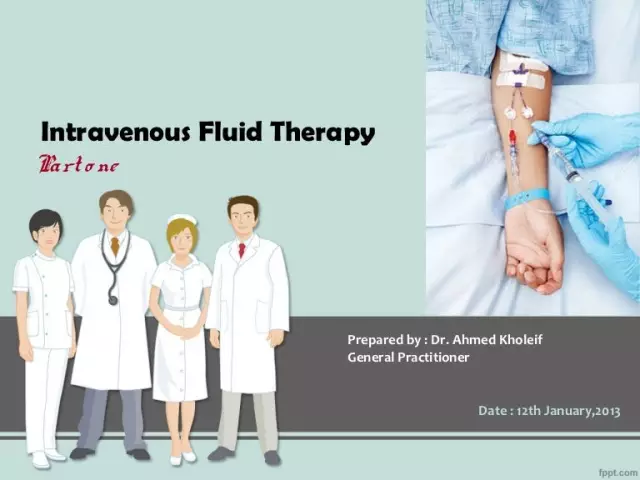- Author Rachel Wainwright [email protected].
- Public 2023-12-15 07:39.
- Last modified 2025-11-02 20:14.
Gefitinib
Instructions for use:
- 1. Release form and composition
- 2. Indications for use
- 3. Contraindications
- 4. Method of application and dosage
- 5. Side effects
- 6. Special instructions
- 7. Drug interactions
- 8. Analogs
- 9. Terms and conditions of storage
- 10. Terms of dispensing from pharmacies
Gefitinib is a protein tyrosine kinase inhibitor; antineoplastic agent.
Release form and composition
Dosage form - film-coated tablets: round, biconvex, from pink to pink with a brownish tint (10 pcs. In aluminum foil blisters, 10 and 30 pcs. In plastic bottles; in a cardboard box 1 blister or 1 bottle).
Active ingredient: gefitinib, in 1 tablet - 250 mg.
Additional components:
- core composition: sodium lauryl sulfate, microcrystalline cellulose, croscarmellose sodium, povidone K-30, magnesium stearate, lactose monohydrate;
- shell composition: film coating IC-S-2269 - talc, polyethylene glycol, titanium dioxide (E 171), hypromellose, iron oxide yellow (E 172), iron oxide red (E 172).
Indications for use
Gefitinib is a drug for the treatment of locally advanced or metastatic non-small cell lung cancer resistant to chemotherapy regimens containing platinum derivatives.
Contraindications
Absolute:
- age up to 18 years;
- pregnancy and lactation;
- hypersensitivity to drug components.
Relative:
- increased activity of hepatic transaminases and the concentration of bilirubin;
- pneumoconiosis;
- idiopathic pulmonary fibrosis;
- post-radiation pneumonia;
- interstitial pneumonia;
- drug pneumonia;
- glucose-galactose deficiency, lactase deficiency, lactose intolerance.
Method of administration and dosage
Gefitinib should be taken orally, without reference to meals, once a day.
The standard dose is 250 mg, regardless of the age and body weight of the patient, his gender and ethnicity, kidney and liver function (including the presence of severe liver failure due to metastatic liver damage).
If the next dose is missed, the drug should be taken as soon as possible, provided that there is at least 12 hours before the next dose. Otherwise, you should not double the dose.
Side effects
Most often (more than 20% of cases) during therapy, side effects are noted such as skin rash (including acne), dry skin, itching and diarrhea. These reactions usually appear within the first month of treatment and are reversible.
Serious adverse reactions - grades 3-4 according to the general toxicity criteria - occur in about 8% of patients. Only 1% of patients had to interrupt therapy due to side effects.
Classification of side effects depending on the frequency of their development: very often - ≥ 10%, often - from ≥ 1% to <10%, infrequently - from ≥ 0.1% to <1%, rarely - from ≥ 0.01% to <0.1%, very rarely - <0.03%.
Possible side effects:
- allergic reactions: very rarely - urticaria, angioedema;
- on the part of the skin and skin: very often - dry skin (including the formation of cracks against the background of erythema), itching, pustular rash; often - alopecia, nail changes; rarely - cutaneous vasculitis, bullous skin changes (including Stevens-Johnson syndrome); very rarely - exudative erythema multiforme, toxic epidermal necrolysis;
- on the part of the organs of vision: often - xerophthalmia, blepharitis, conjunctivitis; infrequently - impaired growth of eyelashes, reversible corneal erosion; rarely - keratitis;
- from the kidneys and urinary tract: often - cystitis, increased creatinine in the blood, proteinuria; rarely - hemorrhagic cystitis;
- on the part of the hematopoietic organs: often - epistaxis, hematuria; infrequently (when taking warfarin) - hypocoagulation and / or increased frequency of bleeding;
- from the respiratory system: infrequently - interstitial pneumonia (3-4 degrees of toxicity, up to death);
- from the digestive system: very often - nausea, diarrhea (in rare cases - severe); often - an increase in the concentration of bilirubin, dehydration, an asymptomatic increase in the activity of hepatic transaminases, anorexia, vomiting, stomatitis; rarely - perforation of the gastrointestinal tract, pancreatitis, hepatitis; very rarely - liver failure, including fatal;
- others: very often - asthenia; infrequently - pyrexia.
special instructions
Gefitinib sometimes causes interstitial lung disease that can be fatal. With an increase in symptoms such as fever, cough and shortness of breath, you should immediately stop taking the drug and conduct an appropriate examination. If the disease is confirmed, adequate treatment is prescribed.
Most often, interstitial lung lesions were observed in residents of Japan - in about 2% of 24,000 patients receiving gefitinib, compared with other countries - 0.3% of 39,000 patients.
Risk factors for the development of interstitial lung disease include: smoking, history of interstitial pneumonia, normal lung tissue on computed tomography 2), advanced age (> 55 years), disease duration (NSCLC) <6 months.
During treatment, it is necessary to periodically monitor liver function. In the case of a pronounced increase in the activity of hepatic transaminases, the drug is canceled.
Gefitinib can cause gastrointestinal (GI) perforation. In most cases, this is facilitated by risk factors, such as intestinal metastases at the sites of perforation, the use of non-steroidal anti-inflammatory or steroid drugs, smoking, and old age. If gastrointestinal perforation is confirmed, the drug is withdrawn and appropriate treatment is prescribed.
If you experience such phenomena as nausea, anorexia, vomiting, prolonged or severe diarrhea, visual disturbances, you should immediately consult a doctor.
In the case of difficult to stop diarrhea and the development of adverse reactions from the skin, you can take a break in treatment (up to 14 days) to normalize the condition.
Four cases (one of them lethal) of cerebral hemorrhages were reported in children with brainstem glioma or non-radically removed glioma of supratentorial localization when Gefitinib was used as first-line therapy in combination with radiation therapy. Another case of cerebral hemorrhage was recorded in a child with ependymoma when Gefitinib was used as monotherapy. In adult patients with non-small cell lung cancer treated with this drug, such phenomena have not been registered.
Women and men of childbearing age should use reliable methods of contraception for the entire period of treatment and for at least 3 months after it ends.
The drug may cause visual disturbances, dizziness and fainting. In these cases, it is recommended to refrain from engaging in potentially hazardous activities that require speed of reactions and increased attention, including driving.
Drug interactions
- rifampicin: the total concentration of gefitinib in blood plasma decreases by 83% during the entire observation period (AUC);
- vinorelbine: it is possible to enhance its neutropenic action;
- metoprolol: increases its effect by 35%;
- drugs that contribute to a significant and long-term increase in the pH of gastric contents: AUC of gefitinib decreases by 47%;
- potent inhibitors of the CYP3A4 isoenzyme (clarithromycin, ketoconazole, telithromycin, posaconazole, voriconazole): increases the concentration of gefitinib in blood plasma;
- drugs that induce the activity of the CYP3A4 isoenzyme (carbamazepine, phenytoin, St. John's wort preparations, barbiturates): it is possible to increase the metabolism of gefitinib, decrease its concentration in blood plasma and, as a result, its effectiveness.
With the concomitant use of warfarin, prothrombin time should be monitored regularly.
Analogs
The analogue of Gefitinib is Iressa.
Terms and conditions of storage
Keep out of reach of children at temperatures up to 25 ° C.
Shelf life is 2 years.
Terms of dispensing from pharmacies
Dispensed by prescription.
Information about the drug is generalized, provided for informational purposes only and does not replace the official instructions. Self-medication is hazardous to health!






